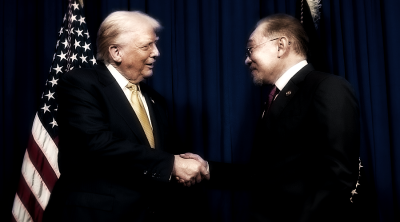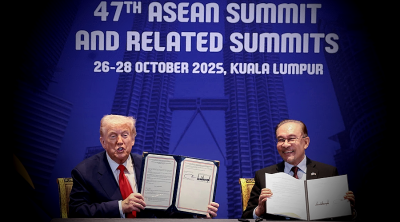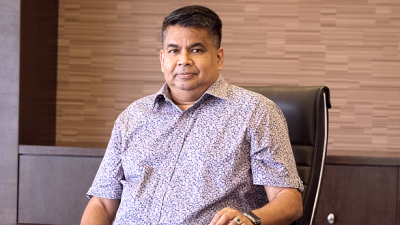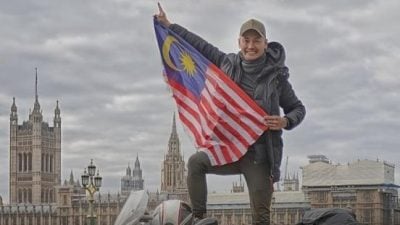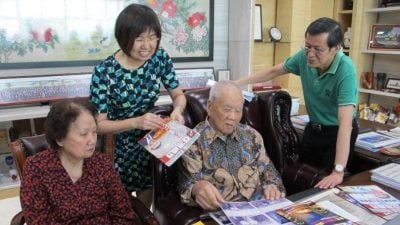
The tariff clock is ticking again. Washington’s “reciprocal-tariff” playbook now includes a 90-day freeze for everyone but China, where duties spike to 104 percent. Beijing retaliates at 125 percent. Europe won’t weaken its tech rules to win favor.
Meanwhile, Fed official Neel Kashkari flags falling stocks, rising yields, and a softening dollar—early signs that investors are losing faith in US fundamentals.
Into this churn, President Xi Jinping’s April tour of Vietnam, Malaysia and Cambodia was mocked by some US commentators as a quixotic shopping trip to countries that “have no money.”
But the quip misses four strategic truths crucial to anyone tracking capital, supply chains, or political risk.
ASEAN markets are not “poor”—they’re emerging powerhouses. Now the world’s fifth-largest economy, ASEAN is no bargain-bin. Malaysia, Vietnam and Cambodia are embedded in global supply chains—from semiconductors and textiles to palm oil and electronics—while Malaysia and Vietnam anchor diversified, tech-savvy industrial hubs.
The bloc absorbs high-value chips, enzymes, cloud services and logistics, all set to outpace global GDP.
Far from passive buyers, these states are co-designing rail links, AI nodes and green grids—strategic partners in co-development, infrastructure, and regional trade, not outlets for surplus steel.
China arrived to plant anchors, not clear warehouses. The 30+ agreements signed during Xi’s visit signal long-term positioning—AI, digital infrastructure, rail, green tech—not surplus dumping.
The “Two Countries, Twin Parks” model (e.g., Kuantan-Qinzhou) reflects co-created value chains, not just trade.
China is embedding itself in the infrastructure of influence: transport, digital economy, energy, and culture diplomacy.
Mockery shows precisely a zero-sum lens the region no longer buys. ASEAN countries hedge, not choosing sides: capital from East and West, policy space at home. Dismissing that calculus merely amplifies the very narrative that Washington prefers alignment to autonomy.
China, in contrast, is offering tailored cooperation frameworks, soft power through civilizational dialogues, and mutual infrastructure gains.
ASEAN is a key gateway to the Global South. From rare-earth refining to the Strait of Malacca, the bloc is the hinge of Indo-Pacific connectivity.
Beijing’s Belt & Road 2.0 upgrades hard infrastructure into digital and green corridors, with Malaysia as a pilot for sovereign AI clouds, smart ports and low-carbon logistics.
The “no money” narrative overlooks trillions in South–South capital seeking reliable hosts. For ASEAN, this engagement offers real financing, physical infrastructure, and market access—often faster and with fewer strings than Western offers.
Far from the caricature of a supplicant, Putrajaya has played a deliberately quiet hand—exactly the “resilience without retaliation” lens urged in EMIR’s April series on the new tariff shock (refer to “Trump tariff shock: Resilience, not retaliation” and “Embracing disruption, driving transformation: Malaysia’s strategic response to Trump tariff turbulence”).
Three angles merit attention.
Strategic composure. Malaysia declined tit-for-tat tariffs, shielding exporters from an escalation spiral while signaling rule-of-law steadiness to investors.
The 90-day US suspension for most partners only amplifies that bet: uncertainty rewards countries that keep policy signals clear.
Active neutrality in practice. By welcoming Xi while conducting regular defense drills with the United States and actively shaping CPTPP digital-trade discussions, Malaysia reinforces its “bridge, not battleground” brand—an approach mapped by EMIR Research in “Active neutrality in the pursuit of AI innovation” (Jan 2025).
As ASEAN Chair this year, Kuala Lumpur can mainstream that stance into bloc-wide positions on supply-chain security and currency settlement.
Early-mover dividends. BRI 1.0 gave Malaysia ports and railbeds; BRI 2.0 now promises sovereign AI infrastructure, smart logistics corridors, and RM 25.7 billion in fresh twin-park investment—7,500 skilled jobs and a trans-shipment upgrade few rivals can match.
But to truly capitalize, these zones must evolve beyond static industrial enclaves into dynamic innovation districts (also championed by China—urban-integrated ecosystems where research, entrepreneurship, and talent co-locate and collaborate.
EMIR Research’s “Rethinking Malaysia’s tech park model: The case for an innovation district” lays out the transformation blueprint: mixed-use design, networked governance, and a culture of daily innovation—not just hardware installation.
Meanwhile, Washington’s tariff gamble is looking increasingly self-harming.
Goods production makes up just 10 percent of US GDP, while services—tourism, education, finance—carry the real export load.
Visa clampdowns and geopolitical tension have already dented these sectors.
Tariffs meanwhile raise input costs for US factories still reliant on Chinese electronics and rare earths. The effect shows up in consumer prices long before new jobs arrive in Ohio.
Even if firms reshore, automation limits hiring and high wages hike production costs. Apple’s US$430 billion US investment plan and TSMC’s US$40 billion Arizona fabs look bold—until one asks about technicians, ecosystem depth, and long-term subsidy needs.
China, by contrast, sends only 15 percent of its exports to the US; America accounts for just 7 percent of Chinese imports. The loss stings—but it does not cripple.
Meanwhile, Beijing’s quiet selloff of US Treasuries and BRICS payment-network pilots, erodes the dollar premium Washington once wielded with impunity.
Seen from Putrajaya, the contrast is stark: one superpower raising barriers in hope of reviving jobs that robotics will anyway absorb; another offering co-investment in industries of the future.
Little wonder Malaysian policy-makers prefer hedging to heckling.
What more can be done?
Ring-fence sovereign value—and build local capacity to match. Every MoU should include local-content floors and audit-ready transparency, not just to keep SMEs involved but to blunt “selling the country” backlash.
Publishing full-life-cycle costings—especially for large infrastructure—can pre-empt white-elephant tags and public distrust.
But quotas alone won’t shield domestic firms if financing and tech absorption lag.
Matching-grant schemes and IP co-ownership clauses can help local players scale, absorb know-how, and stay competitive.
As Transparency International’s data shows, diligence is not just good governance—it’s political insurance.
Move up the chain, not just around it. Malaysia can position Penang and Johor as last-mile assembly and integration hubs for high-value electronics, machinery and tech systems—especially as global firms diversify production footprints to manage geopolitical risk and rising input costs.
With bonded-zone efficiency, streamlined customs, and compliant rules-of-origin processes, Malaysia becomes a natural base for substantial transformation.
This isn’t just about rerouting trade—it’s about capturing more value onshore and creating high-paying jobs in manufacturing, quality control and advanced logistics.
The only durable hedge against future geopolitical yo-yo risks is to deeper embed global flows in domestic value creation.
And in the broader scheme of Malaysia’s infrastructure ambitions—such as the Kuala Lumpur–Singapore high-speed rail —these hubs could play a powerful strategic role.
By concentrating attractive jobs along the corridor, especially in Johor, Malaysia can incentivize more workers to disembark before Singapore, turning transit points into transformation zones (refer to “From transit to transformation: Unlocking the KL-Singapore HSR’s potential”).
What begins as supply-chain hedging becomes, over time, a foundation for anchored talent, anchored value, and anchored national resilience.
Deepen yuan–ringgit settlement. Settling a bigger share of bilateral trade in local currencies cushions FX shocks and dovetails with BRICS de-dollarization experiments.
Early pilot programs in palm-oil and E&E contracts could scale quickly.
Talent acceleration must match capital acceleration. Malaysia should tie government-funded scholarships and fellowships to the new AI labs and BeiDou hub, ensuring a steady pipeline of local expertise in strategic tech.
A 30 percent industry seat rule on research grant boards—along with other recommendations outlined in EMIR Research’s “Malaysia’s digital renaissance: ASEAN’s gateway to innovation”—would help keep R&D priorities grounded in real-world demand.
It’s how we anchor talent while aligning innovation with national and commercial goals.
Sun Tzu advised seizing opportunity in chaos. Xi’s Kuala Lumpur stopover was not a mere courtesy call; it was a strategic semaphore to any nation willing to plan beyond a 90-day tariff window.
However, Malaysia’s task is not to just pick heroes in a morality play but to pick terms.
The government’s low-drama diplomacy, backed by clear guard-rails and relentless upskilling, can turn volatility into velocity.
If executed well, Malaysia will not merely dodge collateral damage; it will chart a course that others in the region may soon study.
That prospect—first sketched in EMIR Research’s “Trump’s tariff threat: The timely catalyst for global realignment” last year—is no longer theoretical.
The storm clouds are real; so too is the chance to sail ahead of them.
(Dr Rais Hussin is the Founder of EMIR Research, a think tank focused on strategic policy recommendations based on rigorous research.)
ADVERTISEMENT
ADVERTISEMENT






